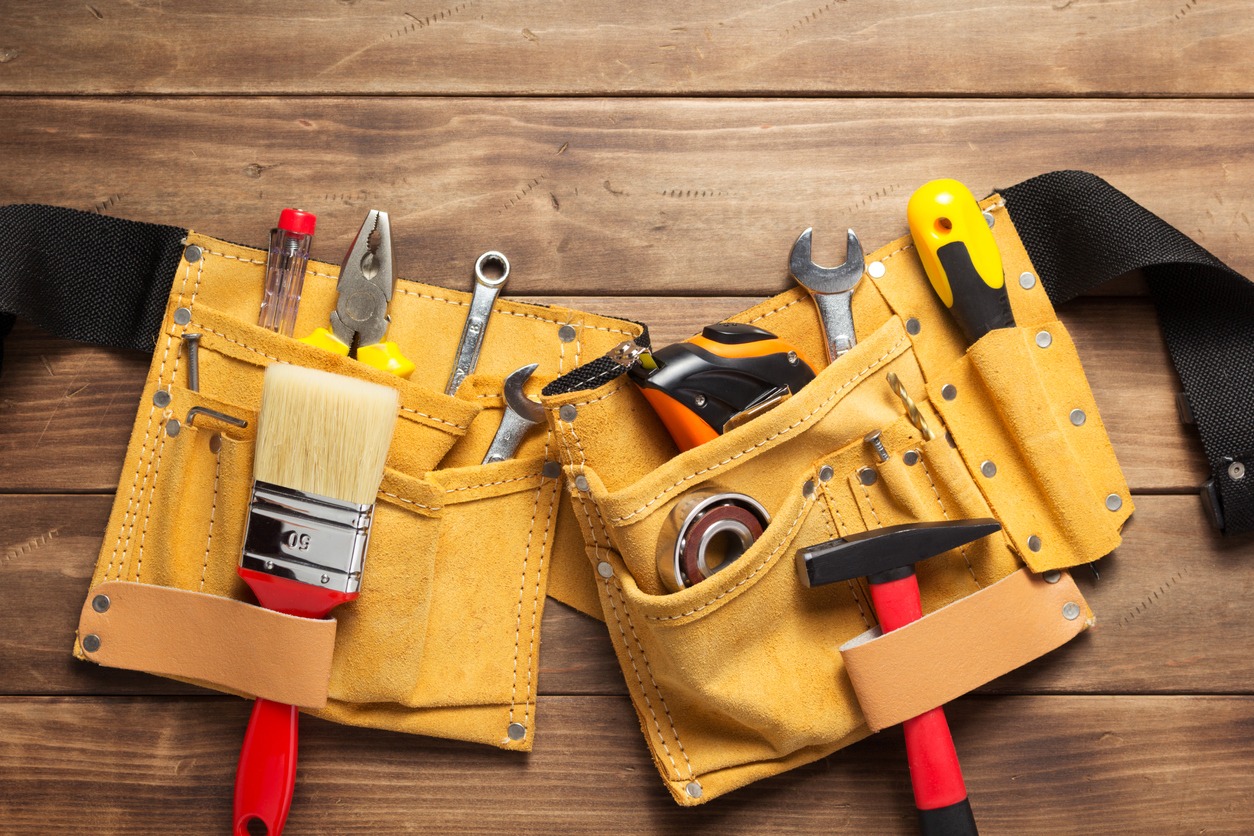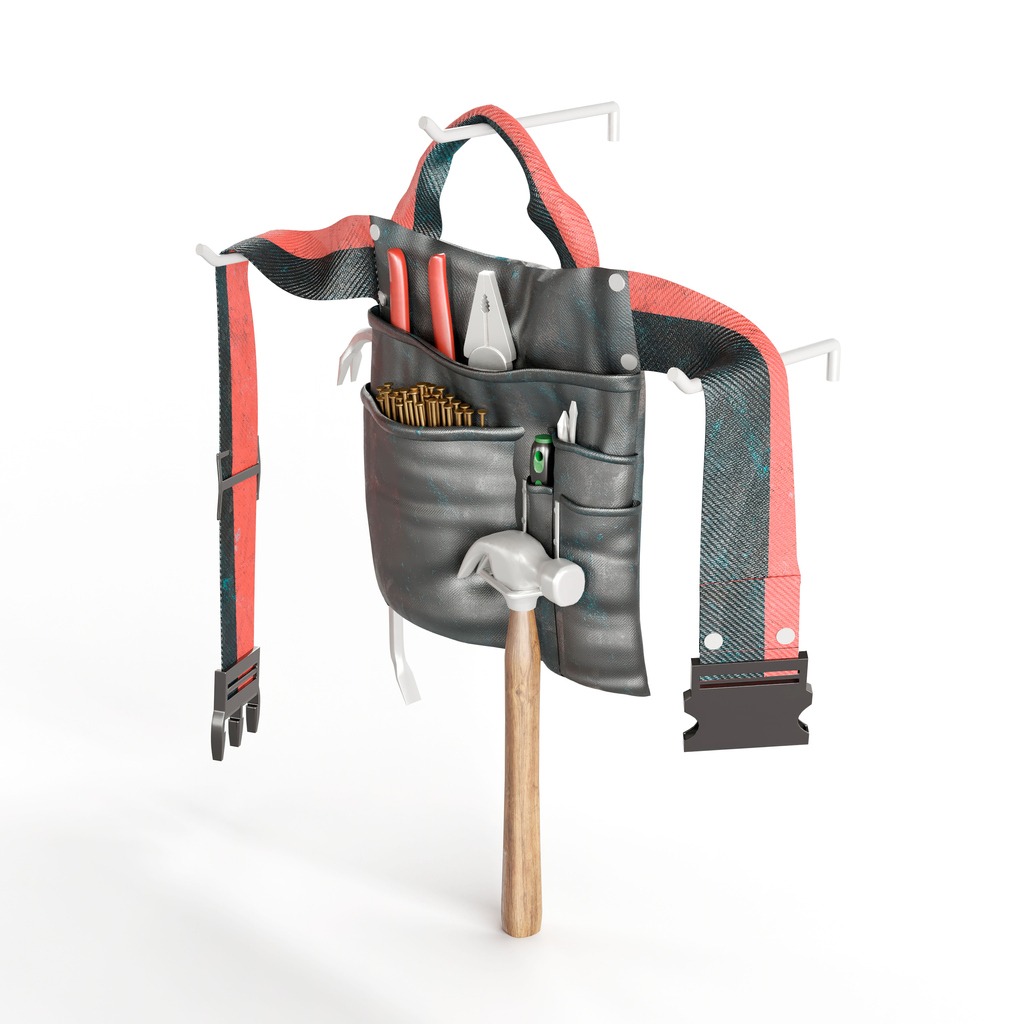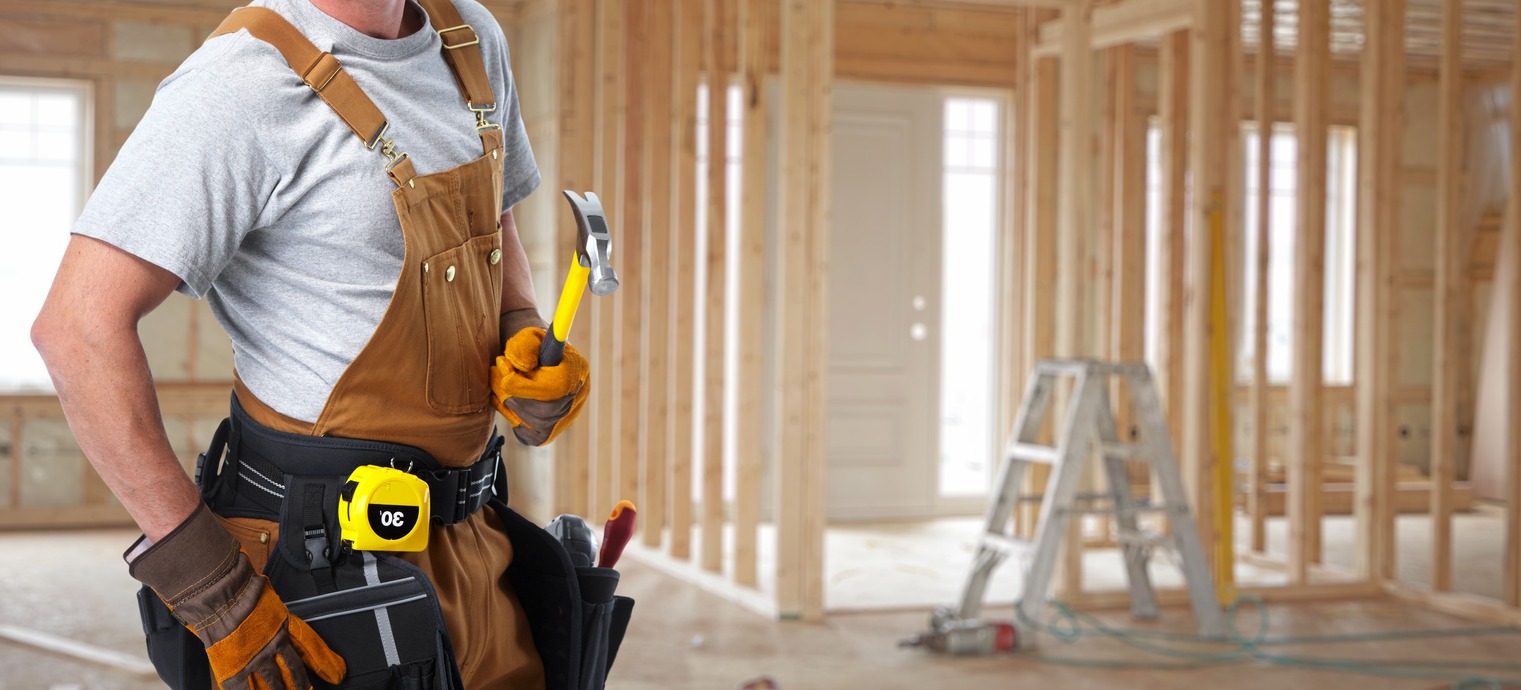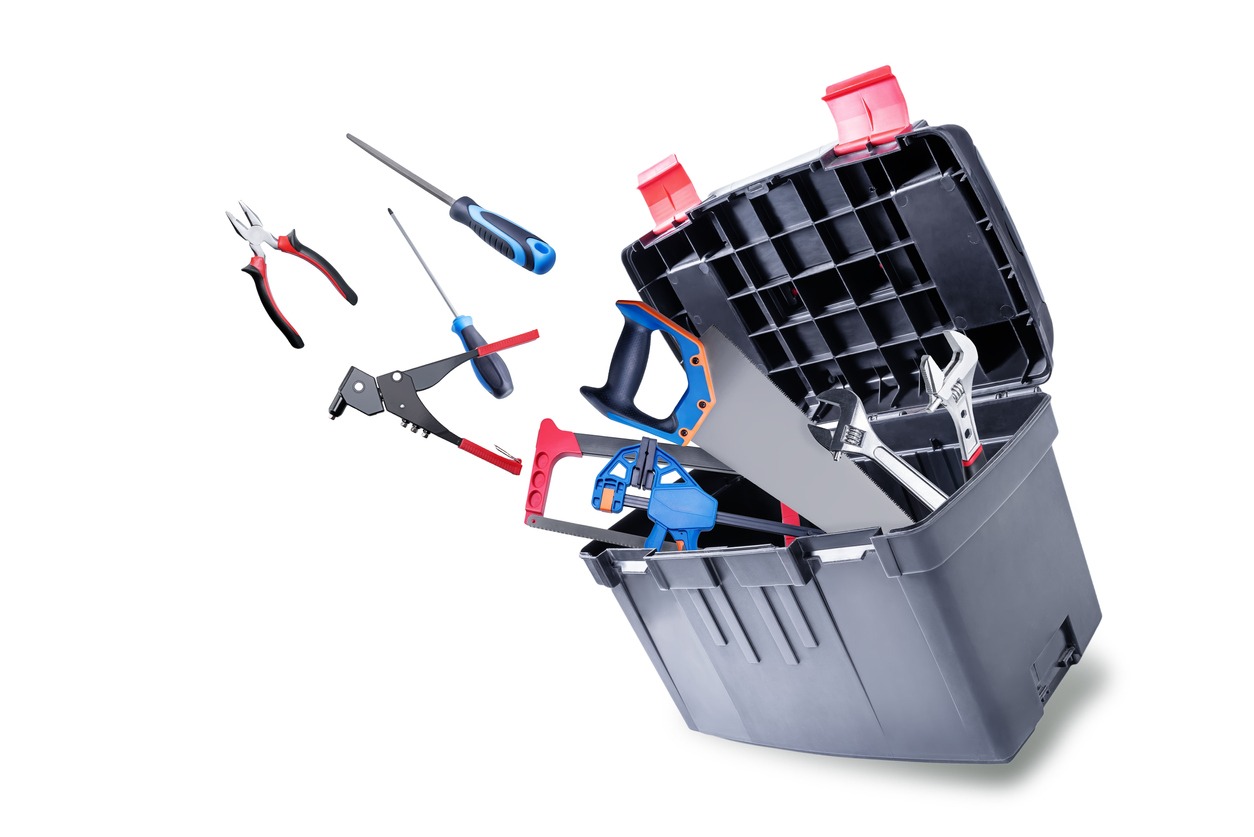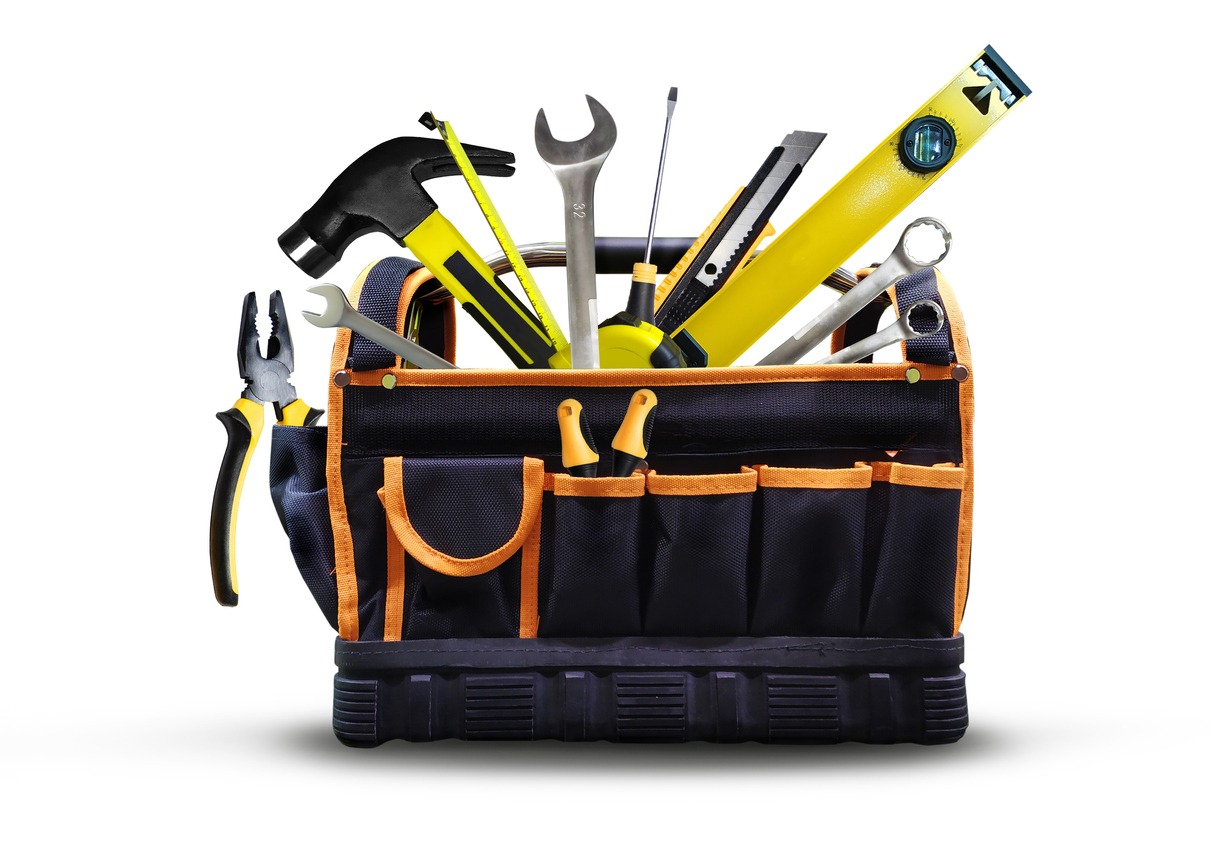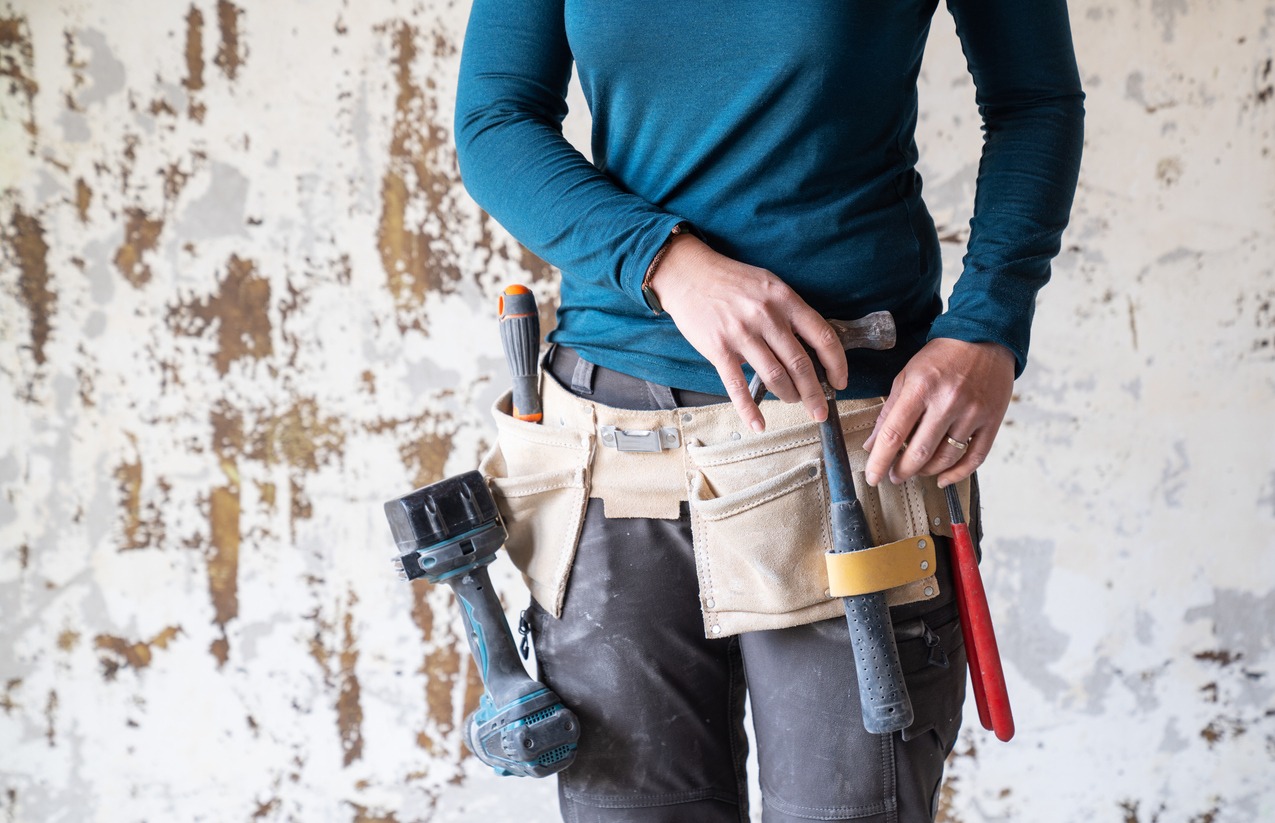Who Needs a Tool Bag?
Almost anyone who carries tools, whether it’s a construction worker, carpenter, technician, electrician or a DIYer, needs something that makes it easier to organize and move tools from one place to another. Tool bags minimize the chances of expensive tools getting damaged and misplaced. They also keep tools handy and well organized for use.
Why Not Use a Regular Bag?
Sure, one can also put all the tools inside any regular bag, but they are not designed specifically for protecting and organizing tools. To manage your tools and increase your efficiency, you need a durable, sturdy and purpose-built tool bag to protect your tool investment. Tool bags offer the flexibility, functionality and design we need to ensure that our tools don’t get damaged and we are able to quickly find what we need.
Things to Consider When Buying a Tool Bag
While searching for a tool bag, you’ll come across all sorts of options, including top-end and budget bags. However, there are a few things that can help you make a better buying decision. Let’s have a look at some of these now:
- How and where you’re planning to work–there is no point in spending more money if you just need a reliable bag to move a few tools around the home.
- Your own budget
- Build quality
- Number of pockets
- Spaciousness
- Adjustable shoulder straps
- Zipper pockets
- Overall weight
All of the factors above play an important role in choosing your tool belt bag. In any case, you will want a tool bag that’s built to last and makes it easier to organize different types of tools.
The User’s Profession
The size and spaciousness of the tool bag are ultimately determined by the number and weight of your tools. Construction workers, plumbers, and pros typically want a bigger bag able to hold heavier tools with both inner and outer compartments for quicker access. Most DIYers would find an affordable and lightweight bag more suitable, while pros need something bigger with a large compartment and separate inner and outer pockets.
Tool belts for framing purposes usually come with inbuilt suspenders, which help to dispel the weight of larger power tools. There are also specialized drywall tool belts that have more pouches for storing screws so that your hands are as free as possible. For cable technicians, the preferred tool belts will be lightweight with a lot of pouches too. Tool belts for carpenters, HVAC maintenance workers, electricians, and roofers also give priority to the need for having small tools on hand.
Choosing the Right Material
Tool bags are made using a variety of materials, including leather, suede, canvas, nylon, and plastic. Choosing the right kind of material depends on your budget, weight of the tools you want to carry and also the weather condition, but canvas remains a good, affordable option for most situations.
The leather options are usually the most durable and long lasting, especially if you take good care of them. However, they are also the most expensive of the lot. If you use your tool belt a lot, though, its cost could be an investment that eventually pays for itself.
Tool Bags vs. Toolboxes
Instead of a tool belt bag, some professionals and DIYers may prefer to carry around a tool box.
Both have their own advantages and disadvantages, so it ultimately comes down to how you want to store and move your tools around. Other than tool bags, you also have the option of tool chests, tool cabinets, rolling toolboxes and of course toolboxes (metal and plastic). Tool boxes have a hard casing and several compartments for fitting in all kinds of tools, including woodworking tool accessories. Since everything has a place, toolboxes will also make it easier for you to carry everything around and access a specific tool when it’s needed.
Still, tool bags are the easiest to move around with all your needed tools neatly organized inside. Since we are more concerned about the advantages of tool bags, here is how they stack up against toolboxes:
- Toolboxes are usually larger and bulkier than tool belts and bags
- Since toolboxes are used for carrying a large number of tools, there isn’t much versatility there; someone who still needs an introduction to jointers, for instance, wouldn’t need so many tools all the time–they’d be much better off putting whatever they need in their tool belt instead
- Toolboxes can also be hard to carry and move, especially if they have uncomfortable handles–tool belt bags, on the other hand, are usually comfortable and easy to manage
- Too many compartments make it difficult to quickly locate the tools in a toolbox–with a tool belt bag, you have a few pockets that should hold whatever you need in a pinch
- If you don’t place tools back into their designated place in a toolbox, you’ll have a hard time finding them the next time
- Latch-closed compartments in toolboxes make things difficult at job sites
The Main Advantages of Tool Belt Bags
Here are some of the advantages of tool belt bags that should make us consider getting one for our projects or orders:
- They are lightweight and easy to carry
- Most models are durable and sturdy, though it really depends on the brand and make you choose
- Pouches allow the vertical storing of tools, making it easy to find them. You can even look up what tools are needed for model building and keep them in your tool belt during related projects
- More suitable for job sites, as you don’t have to fiddle with latches, locks, trays, etc.
- Most tool belts and bags can be closed with a zipper, making it easy to ensure that no tool falls out
- If there’s a wide-mouth design, this allows the user to carry an extra load such as extension cords and battery packs
- There may also be padded spaces for cell phones, gloves, bottles etc.
- Some options may have water resistant or waterproof bases, which means that you’re not risking your tools rusting when you’re working on something
- Certain tool bags or belts even come with an inbuilt light, speakers, and other features
How to Choose the Right Tool Belt Bag 
If you want to get the best tool belt bag for your specific needs, here are some considerations to keep in mind.
1. The comfort level
At all events, the tool belt you choose should be comfortable to wear. Since you’d be wearing this while working on something important, you don’t want to get distracted by an uncomfortable fit.
When in doubt, go for adjustable straps. Several models of tool belts have them, which makes life easier for the end users.
2. The durability guarantee
You might be using the tool belt in all kinds of conditions. It’s meant for working purposes, so it should be able to withstand everyday wear and tear. Take a look at the material before making a purchase; if that’s of high quality; your tool belt is likely to last a long time.
The most water-resistant materials for tool belts are polyester and leather, so look for these if you expect to work in damp environments sometimes. Be sure to check for reinforced stitching as well!
A metal buckle is also more long lasting than a plastic one. You may also be able to find tool belts with sturdy material as well as additional support by steel rivets in the design.
The belt should be strong enough to support the tools you’re putting in it. If you invest in a durable tool belt now, you probably wouldn’t have to pay for frequent replacements in the future.
3. Choose the correct size and fit
We’ve already discussed how a tool belt should be comfortable for the wearer. Related to this is the matter of fitting and right size for a tool belt bag. If the belt is too small, it can be constricting and difficult to handle when working on the field. If it’s too large, it may be difficult to keep in place and might even pose a danger if you’re working with power tools.
You can figure out the right size for your tool belt by measuring your hips or waist, depending on the place where you wear the tool belt. Then, check your shortlisted tool belt options for the correct size ranges.
Make sure to try the tool belt on before making any final decision. Ideally, it should have sizing holes, adjustable straps, and other features for customizing the fit. You also want to ensure that the tolls you use will fit inside the pockets and still allow easy access.
4. The design and weight
If the belt is too heavy or not comfortable, people will find it difficult to leave on for too long. If you’re craving comfort above anything else, look for tool belts with comfortable padding on the shoulder straps or the waist area. Along with providing some cushioning, this padding will also reduce the pressure of any point and help in evenly distributing the weight of your tools.
Ideally, the belt should be made with moisture-wicking and breathable material. This will help to keep the wearer as dry and cool as possible. Make sure that the belt itself isn’t too heavy, as this can add undue strain on your back while working.
5. The organization potential
A tool belt with a proper design will help you organize your tools and increase your efficiency while woodworking or completing any DIY projects.
Again, a lot depends on what kind of projects you work on and what tools you need the most. With pockets of varying sizes, toll belts will help you sort the tools accordingly. This way, you won’t be fumbling for a large screwdriver in a pocket full of screws.
Options for lefties
Since the majority of the population is right-handed, most of the tool belt bags will be designed around them. For lefties, you can get tool belts that have removable pouches. This can help to accommodate any left-handed person without them having to customize a special tool belt or be uncomfortable while selecting their tools.
Conclusion
In today’s time, carrying equipment such as tools has become a hard task. Carpenters and workers in other professions (as well as DIY enthusiasts) have to carry many tools. If they don’t have proper bags to carry them, this moving around can damage the tools or result in some lost pieces.
With the right tool bag, you can hold the maximum number of tools with the minimum level of fatigue. There are several budget-friendly options in the market now, so why not get one today?
